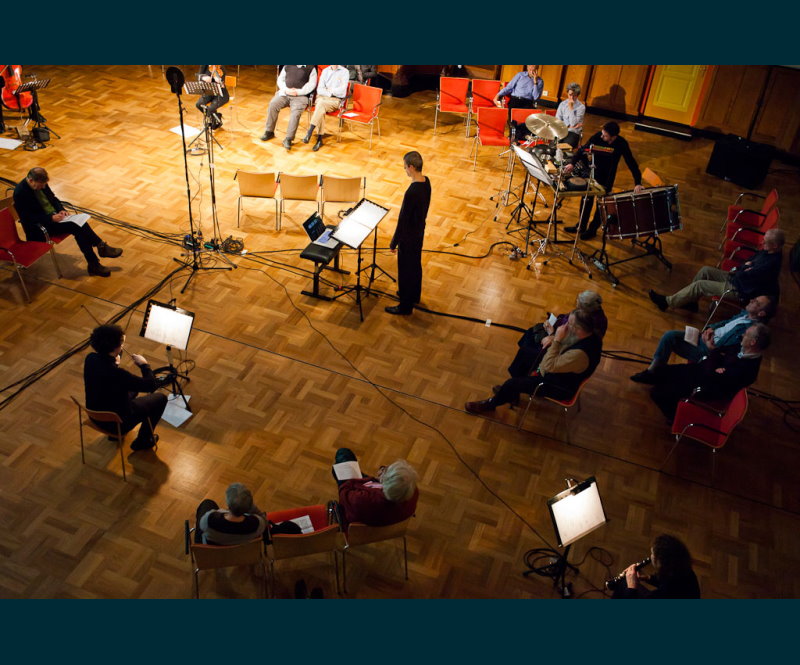Into the Cosmos with the SPECTRA Ensemble
Already in 2000, a first version of Stockhausen's Tierkreis was performed by SPECTRA in Duisburg. Filip Rathé wrote an instrumental arrangement for the ensemble. I myself made an accompanying electronic arrangement in six separate sound channels.
In 2012, this Tierkreis was brought together in one programme with a performance of Atlas Eclipticalis, combined with Cartridge Music, both by John Cage.
Also in 2012, I had a composition ready as a tribute to the two Voyagers that left the solar system around that time after a 35-year journey. This composition nicely complemented this theme. This programme was performed several times including, with a 10-year interval, twice a performance at the Orgelpark in Amsterdam.
Performances of the entire Cosmos project
- 2012 Orgelpark Amsterdam
- 2019 Rozier Library Ghent
- 2022 Brussels, Vanhaerents Arts Collection, Artonov Festival (electronics by Wannes Gonissen)
- 2023 Orgelpark Amsterdam
Tierkreis - Stockhausen
Tierkreis (1974–75) is a musical composition by the German composer Karlheinz Stockhausen. The title is the German word for Zodiac, and the composition consists of twelve melodies, each representing one sign of the zodiac.
Tierkreis was originally written for music boxes as a component part of a theater piece. These twelve melodies form an autonomous work which can be played by any suitable instrument, and exist also in versions to be sung.
The twelve melodies of Tierkreis represent the twelve signs of the Zodiac. A complete performance begins with the melody corresponding to the zodiac sign within which the day of the performance falls, and proceeds through the twelve melodies of the cycle, ending with a return to the starting melody.
For the electronic arrangement, I started from a version on imitation music boxes. This was processed in the studio into a 6-channel version on audiotape, which also included a channel on which a metronome to allow the musicians to play in sync with this studio edit. It is because of this 'click track' that only 6 channels were made because at the time I was limited to an Adat tape recorder with max 8 channels.
Atlas Eclipticalis and Cartridge Music - Cage
For Atlas Eclipticalis, John Cage was inspired by Czech astronomer Antonín Becvár's collection of star charts published in 1958. He even took this book literally as his starting point: on top of the maps he placed staff bars on which - depending on the brightness of the light - he drew larger or smaller dots. The result sounds like a multitude of subtly buzzing sound dots in a resounding firmament.
The word "Cartridge" in the title refers to the cell of phonographic pick-ups, into which a needle is inserted. In Cartridge Music, the performer is instructed to insert a variety of unspecified small objects into the cell; previous performances have used objects such as pipe cleaners, matches, feathers, wires, etc.
In the interpretation of Spectra, 380 events for eight musicians were prepared according to Cage's prescription using his typical graphic score. These events are controlled by the live electronics performer using a specially written computer programme (in Max/MSP) to edit the sounds picked up from these musicians. Choosing to control Cartridge Music for 8 musicians simultaneously in 8 channels has made this a fairly comprehensive setup.
laatste update: 2023.01.21
.jpg)
.jpg)
.jpg)
.jpg)

.jpg)

.jpg)

